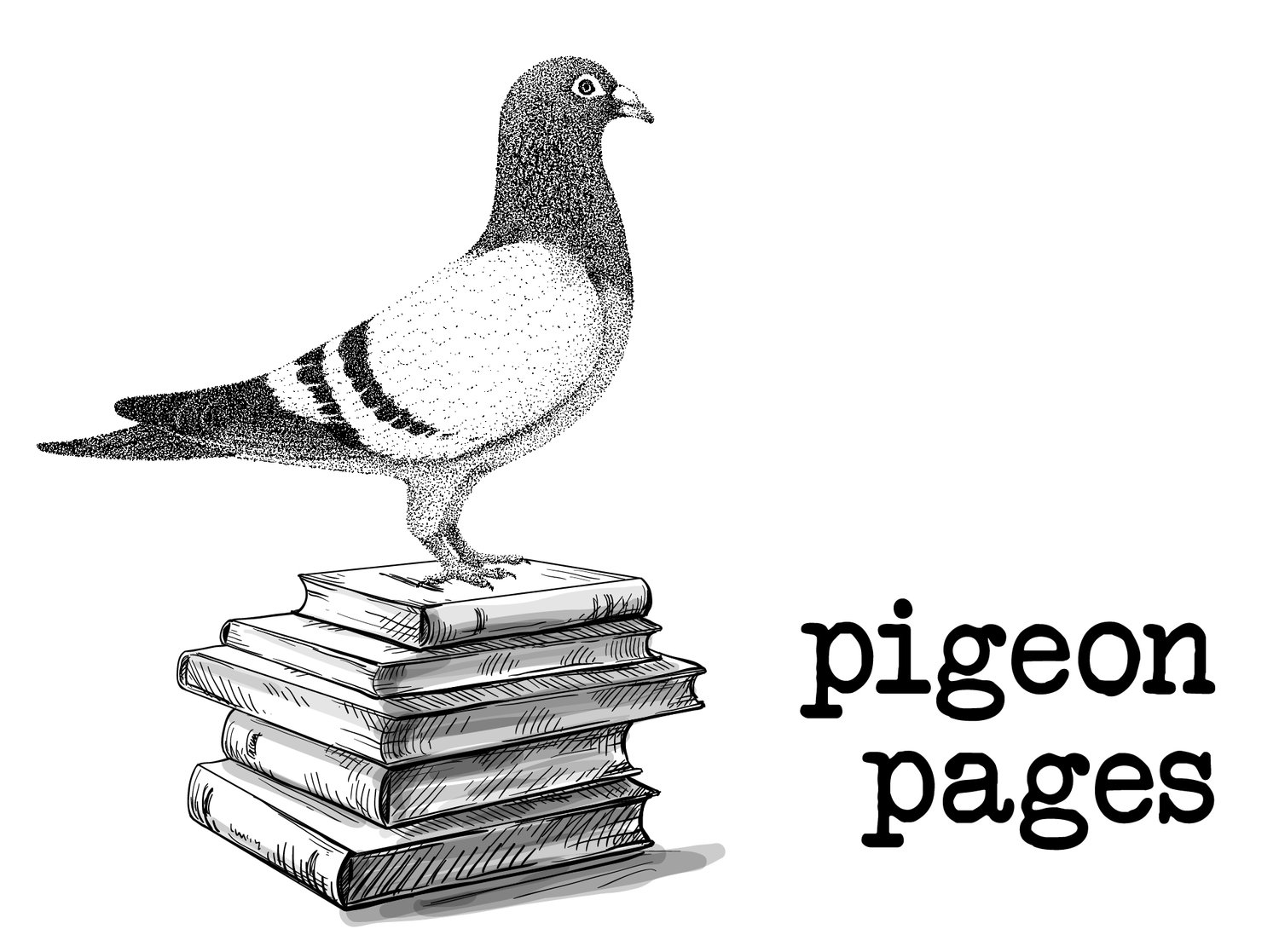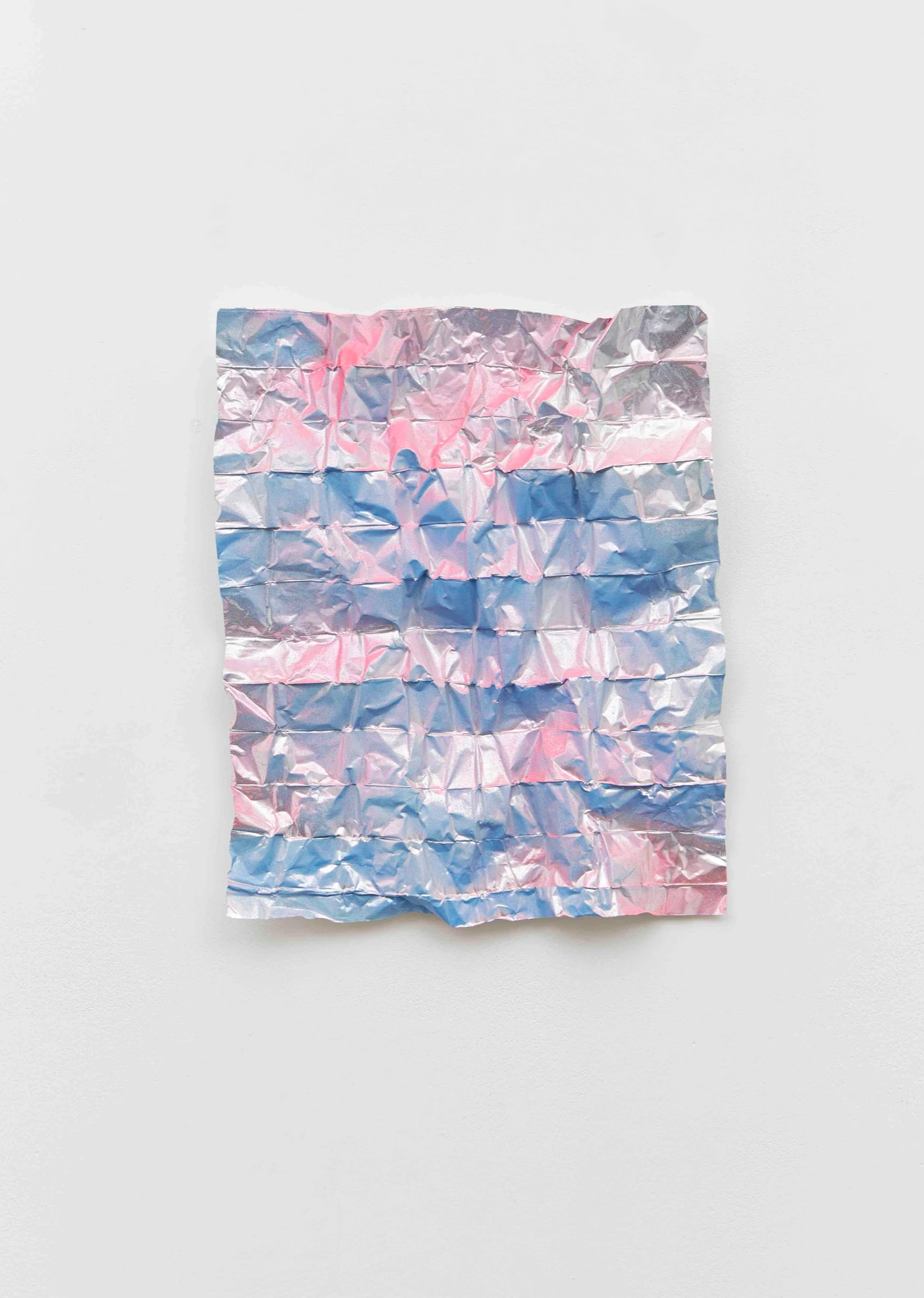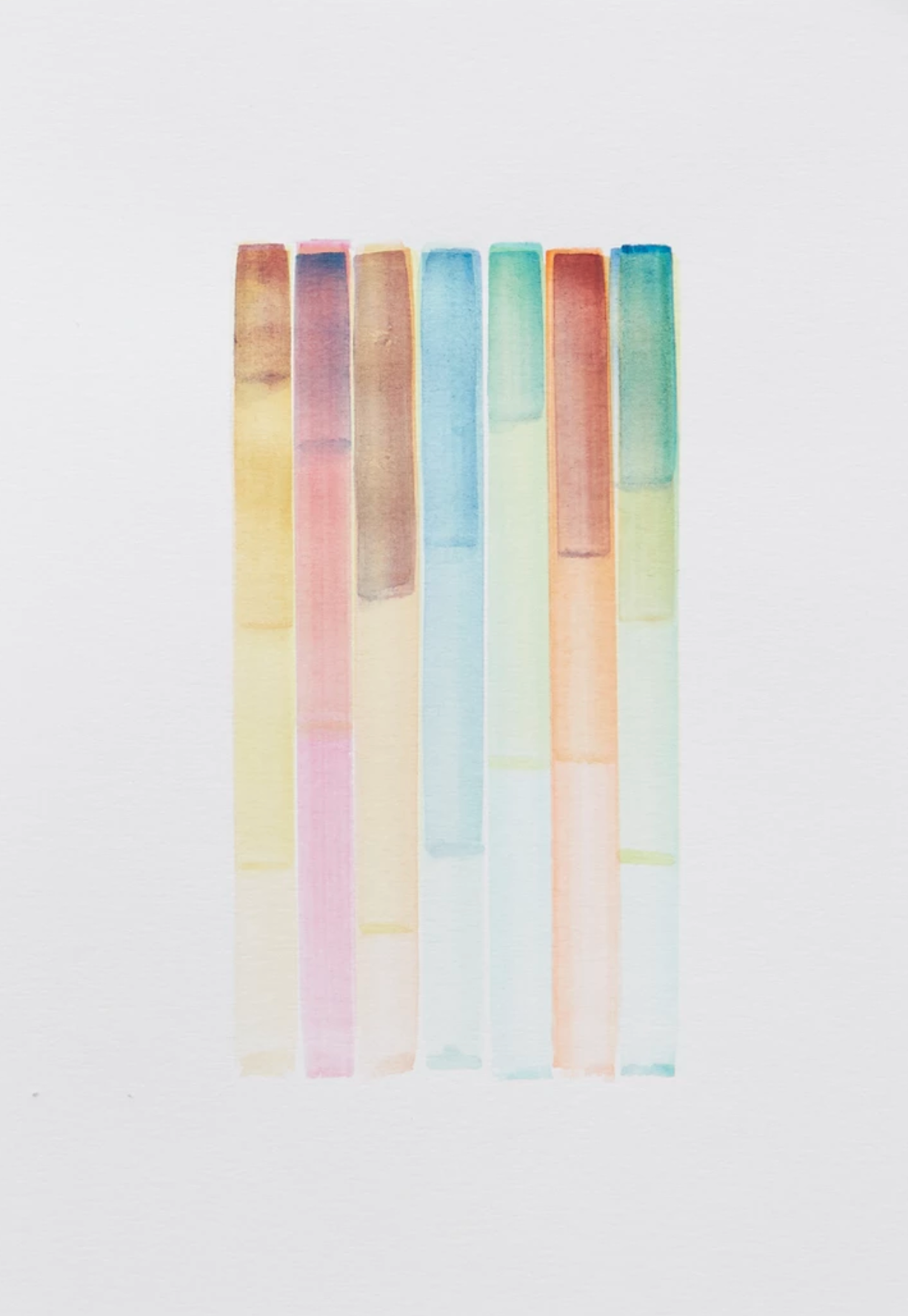Rana Begum, WP384, 2020. Paint on paper, 11" x 8.3". Image courtesy of the artist.
Grieving in Translation
by Chris/tine Deng
At the only available funeral home in the city, the lady on staff takes three days to respond. I send four follow-up emails. It’s May of 2020. The hospital loses my grandma's belongings. I put on my best English. I spend two weeks arguing with the Patient Care team. I ask for the names of everyone I speak to. I open up WeChat to tell my grandma's siblings that she is dead. They send crying emojis to our group chat. I need money for the cremation, I say, this is the link to the GoFundMe. They don’t reply.
Three weeks earlier, a 917 number calls. I set myself to “Busy” on Microsoft Teams.
It’s a doctor from Montefiore, where an ambulance took my grandma a few days ago. She’d been suffering from sudden fatigue and a persistent fever.
“Your grandmother’s oxygen levels are stable, but we’re going to do some chest scans today. It says here that you’re her guardian. We need your consent for a few emergency procedures. Is now a good time?”
During my lunch break, I pace anxiously back and forth between the living room and my bedroom. I immediately head to our TV cabinet. Tucked away in the bottom drawer is a collection of family photo albums my dad once meticulously printed and labeled. There is one photo I reach for: my family at a dinner in Flushing. I am 5? 6? wrapped around my paternal grandma’s neck.
I run my fingers over the matte texture, like prayer beads, like I would reach instinctively for a partner’s hand, as proof that my family existed together in one, singular moment of time.
A different doctor calls me. I head into the bathroom, where there’s better reception.
“Would you like to FaceTime with your grandmother? She’s awake for the first time in days.”
The iPad screen shifts around the dimly lit hospital room until it lands on an IV drip, a metal bed frame, and then, finally, a familiar face. My grandma mouths something at me but it comes out inaudible. She smiles weakly. I take a screenshot, now knowing this will be our last photo together.
Rana Begum, No. 889 Folded Grid, 2019. Spray paint on foil, 11.8" x 9.84". Image courtesy of the artist.
When I was a teenager, I studied these photo albums whenever I missed my dad, snapshots showing my newly immigrated parents, stunning in their ’90s fits. Now, between hospital calls, I study this one photo each time I speak with a doctor to provide myself with a reference point for our age difference, to remind myself what’s at stake.
My grandma sits upright, dignified and composed, my small arm wrapped around her. My parents stare blankly at the camera. The flash is on. I’m missing a tooth in my smile.
The third doctor asks, “Would you want her to be resuscitated if her heart stops? Would you want her to be intubated? 80% of people her age die during this stage. We’re not allowing visitors now but we can make exceptions for extreme cases. We’ll try to get you the proper PPE. Would you be able to come tomorrow?”
I think about my mom, who’s still commuting by subway one hour each way to a public hospital in Lower Manhattan. My two siblings are moving their school year online because we’re all in lockdown.
I think about my grandma, her dignity and the narrative that she’s maintained so carefully and thoughtfully over the decades.
My mom asks, “Is this the last memory you want of 嫲嫲? She wouldn’t even be conscious. Would you want to see her like this? Would she want you to see her like this?”
I think about who the visit would be for.
Twelve hours later, the head surgeon reports another drop in my grandma’s oxygen levels. The antibody therapy isn’t working. Her left lung has collapsed and the right one is giving way. Do I want them to insert a bigger tube in her chest?
“There is so much we don’t know about this virus. If she were my grandmother, I would skip this surgery and increase the medicine. I would make sure she was comfortable. I would let her go in peace.”
I wonder if he’s allowed to tell me what he would do. Did it accidentally spill out? Does he offer a personal hypothetical to everyone on the brink of a decision? I can’t help but picture him on the other end; his unit inundated with a litany of dying patients and ventilator shortages, each moment bringing a cacophony of rotating doctors, flatlining heart monitors, and calls to make. I try not to give it too much weight.
The picture has begun to crinkle at the corners. A piece of tangible evidence that my dad, my grandma, and I were once alive and breathing in the same space.
Here, she was three times married and one time widowed. I was fresh out of preschool. She was a teacher and a poet and a dancer. I had just lost my first baby tooth. She had authored two books of prose and poetry. I had no language for immigration or borders or survival. I did not know about my dad’s looming colon cancer diagnosis or that my mom’s relationship with grandma would sour soon after his death. I did not know that once he was gone, once I was eighteen, the responsibility for my grandma would quietly pass onto me.
All three generations stare back at me, waiting for a decision.
I take my grief to Facebook. I make it pretty for Instagram. Any financial assistance would be tremendously helpful, I type. I consider deleting the entire caption. Instead, I post it. It’s still May of 2020. I scroll through my feed, through rising cases, death counts, and other GoFundMes sandwiched between pictures of wedding proposals and birthday brunches. I feel a quiet, creeping insanity as I swipe from one reality to the next, suddenly aware that we are not all living the same version of “pandemic.” A notification jolts me out of my digital haze: a college friend donates to the fundraiser. Then, a high school ex. Then an old church acquaintance messages me. I sob in front of my laptop screen.
I sign cremation papers from my iPad.
Published February 13th, 2022
Chris/tine Deng is a queer, Chinese American writer and multimedia artist born and based in New York. She is the co-creator of “Chinatown: Then and Now”, a public art exhibition highlighting displacement and gentrification in Chinatown, Manhattan at Essex Market Gallery. Their work was recently featured in “F-Stop in Chinatown” a group exhibition by ThinkChinatown and the JH Project. Her writing explores grief, collective memory, and community resilience. You can find her on Instagram and Twitter at @heycdeng.
The work of London-based artist Rana Begum distills spatial and visual experience into ordered form. Through her refined language of Minimalist abstraction, Begum blurs the boundaries between sculpture, painting and architecture. Her visual language draws from the urban landscape as well as geometric patterns from traditional Islamic art and architecture. Light is fundamental to her process. Begum’s works absorb and reflect varied densities of light to produce an experience for the viewer that is both temporal and sensorial. Born in Bangladesh in 1977, Rana Begum lives and works in London. In 1999, Begum graduated with a BA in Fine Art from Chelsea College of Art and Design and, in 2002, gained an MFA in Painting from Slade School of Fine Art.
Begum has received the Jack Goldhill Award for Sculpture (2012) and Abraaj Group Art Prize (2017), and in 2019 she was elected an RA. Begum's forthcoming exhibitions include Dappled Light, Solo Show, Mead Gallery (2022) and a Solo Show with Cristea Roberts Gallery, (2022).









